Experimental Study on Grouting Quality Detection in Prestressed Pipeline Based on Scattered Wave Method
Abstract
:1. Introduction
2. Theoretical Methods
2.1. Scattering Wave Method
2.2. Chirp Signal
3. Model Test
3.1. Experimental Design
3.2. EGS-PGP Detection Instrument
4. Results and Analysis
4.1. Comparative Analysis of Full-Strip Void Signal
4.2. Single-Void Signal Analysis and Comparison
4.3. Analysis and Comparison of Multiple Void Signals
4.4. Analysis of Different Signal Sources
5. Conclusions
- (1)
- Stability of the peak frequency throughout the test can indicate compact grouting, while a large fluctuation in the peak frequency range with no regular changes can indicate non-compact grouting. For the 10 m long prestressed pipes, the peak frequencies in the compact grouting area at various measuring points ranged from 6462 Hz to 6714 Hz, with an average peak frequency of 6606 Hz, and the peak frequencies in the non-compact grouting area at various measuring points ranged from 3632 Hz to 5508 Hz, with an average peak frequency of 4667 Hz.
- (2)
- A sudden increase or decrease in peak frequency can effectively indicate the location of grouting defects along the pipeline. For the 10 m long prestressed pipes with only one defect, the maximum peak frequency attenuation at the defect position reached 32.88%.
- (3)
- The number of sudden changes in frequency can indicate the number of gaps inside the pipeline. The largest attenuation in peak frequency occurred when the second gap was 2 m away from the first gap, with a difference of 19.71%.
- (4)
- The Chirp signal, compared to the hammer impact signal, shows greater stability and engineering application value in detecting defects using the scatter wave method. The frequency spectrogram post-processed by the EGS-PGP prestressed pipeline grouting quality detection system has engineering application value in visualizing defects.
Author Contributions
Funding
Data Availability Statement
Conflicts of Interest
References
- Zhang, J.; Jin, J.; Wang, Y.; Zhou, W.; Liu, Z. Study Progress of Intelligent Inspection Technology and Equipment for Highway Bridge. J. Highw. Transp. Res. Dev. 2023, 40, 58. [Google Scholar]
- Yan, M.; Yang, Y.; Li, X.; Bao, Y.; Sun, J.; Sun, B. Pretensioned prestress friction losses considering contact imperfection at deviators in prestressed concrete girders. Struct. Infrastruct. Eng. 2021, 17, 1639–1650. [Google Scholar] [CrossRef]
- Sadri, A. Application of impact-echo technique in diagnoses and repair of stone masonry structures. NDT E Int. 2003, 36, 195–202. [Google Scholar] [CrossRef]
- Savino, P.; Tondolo, F.; Sabia, D.; Quattrone, A.; Biondini, F.; Rosati, G.; Anghileri, M.; Chiaia, B. Large-Scale Experimental Static Testing on 50-Year-Old Prestressed Concrete Bridge Girders. Appl. Sci. 2023, 13, 834. [Google Scholar] [CrossRef]
- Woodward, R.J.; Blake, L.S.; Sketch, W.A.J.; Walley, F.; Nicholson, T.A.; Hannah, C.; Dawson, D.B.; Williams, F.W.; Dawe, P.H.; Hendley, A.H.; et al. Collapse of Ynys y Gwas Bridge Bridge. Proc. Inst. Civ. Eng. 1989, 86, 1171–1191. [Google Scholar]
- Rehman, S.K.U.; Ibrahim, Z.; Memon, S.A.; Jameel, M. Nondestructive test methods for concrete bridges: A review. Constr. Build Mater. 2016, 107, 58–86. [Google Scholar] [CrossRef]
- Maierhofer, C.; Arndt, R.; Röllig, M.; Rieck, C.; Walther, A.; Scheel, H.; Hillemeier, B. Application of impulse-thermography for non-destructive assessment of concrete structures. Cem. Concr. Compos. 2006, 28, 393–401. [Google Scholar] [CrossRef]
- Tian, Z.; Huo, L.; Gao, W.; Song, G.; Li, H. Grouting monitoring of post-tensioning tendon duct using PZT enabled time-reversal method. Measurement 2018, 122, 513–521. [Google Scholar] [CrossRef]
- Jiang, T.; He, B.; Zhang, Y.; Wang, L. Detecting of the Longitudinal Grouting Quality in Prestressed Curved Tendon Duct Using Piezoceramic Transducers. Sensors 2020, 20, 1212. [Google Scholar] [CrossRef]
- Liu, H.W.; Zhan, S.P.; Du, Y.H.; Zhang, P. Study on Pulsed Eddy Current Nondestructive Testing Technology for Pipeline Corrosion Defects Based on Finite Element Method. Appl. Mech. Mater. 2011, 120, 36–41. [Google Scholar] [CrossRef]
- Suzuki, T.; Shiotani, T.; Ohtsu, M. Evaluation of cracking damage in freeze-thawed concrete using acoustic emission and X-ray CT image. Constr. Build Mater. 2017, 136, 619–626. [Google Scholar] [CrossRef]
- Yang, Y.X.; Chai, W.H.; Liu, D.C.; Zhang, W.D.; Lu, J.C.; Yang, Z.K. An Impact-Echo Experimental Approach for Detecting. Concr. Struct. Faults Adv. Civ. Eng. 2021, 2021, 8141015. [Google Scholar]
- Martin, J.; Broughton, K.J.; Giannopolous, A.; Hardy, M.S.A.; Forde, M.C. Ultrasonic tomography of grouted duct post-tensioned reinforced concrete bridge beams. NDT E Int. 2001, 34, 107–113. [Google Scholar] [CrossRef]
- Wang, S. Application of Nondestructive Testing Technology in Quality Evaluation of Plain Concrete and RC Structures in Bridge Engineering: A Review. Buildings 2022, 12, 843. [Google Scholar] [CrossRef]
- Hu, M.; Xu, Y.; Li, S.; Lu, H. Detection of defect in ballastless track based on impact echo method combined with improved SAFT algorithm. Eng. Struct. 2022, 269, 114779. [Google Scholar] [CrossRef]
- Yang, C.; Shi, C.; Su, S.; Liu, M. Detection and analysis of grouting compactness based on frequency spectrum analysis and wavelet packet entropy technology. Build. Struct. 2021, 51, 110–115. [Google Scholar]
- Xu, M.C.; Gao, J.H.; Rong, L.X.; Liu, J.X.; Cai, M.T.; Wang, G.K. Experimental study of scattered wave seismic method in the Caijiaying polymetallic mining area. Geophys. Geophys. Explor. 2003, 27, 49–54. [Google Scholar]
- Yin, J.; Wang, W.; Wang, Y. Application of seismic scattering wave simulation imaging method in a mining area of Tongling. Prog. Geophys. 2009, 24, 1367–1376. [Google Scholar]
- Zhao, Y.; Jiang, H.; Zhao, X. Tunnel seismic tomography method for geologica prediction and its application. Appl. Geophys. 2006, 3, 69–74+130. [Google Scholar] [CrossRef]
- Zhang, J.; Liu, S.; Yang, C.; Liu, X.; Wang, B. Detection of urban underground cavities using seismic scattered waves: A case study along the Xuzhou Metro Line 1 in China. Near Surf. Geophys. 2020, 19, 95–107. [Google Scholar] [CrossRef]
- Dolmatov, D.O.; Ermoshin, N.I. Digital Coherent Signal Processing with Calculations in Frequency Domain for Solving Ultrasound Tomography Problems Using Matrix Antenna Arrays with Nonequidistant Arrangement of Elements. Russ. J. Nondestruct. Test. 2023, 58, 869–881. [Google Scholar] [CrossRef]
- Liu, J.; Dong, B.; Wang, F.; Wang, Y.; Chen, M.; Liu, G. Study on cracks defect inspection for GFRP laminates using laser excitation chirp pulsed photothermal radar imaging (CP-PRI). Infrared Phys. Technol. 2021, 114, 103689. [Google Scholar] [CrossRef]
- Guo, Z. Research on Grout Transmission Method Detection of Pre-Stressed Holes Based on BP Neural Network. Ph.D. Thesis, Zhengzhou University, Zhengzhou, China, 2022. [Google Scholar]
- Song, W.; Li, Z.; Xiao, B.; Li, G.; Li, Z. Research on the processing method of non-destructive testing data for anchor rod anchoring quality. J. Eng. Geophys. 2012, 9, 337–341. [Google Scholar]
- Yan, Y.; Wang, Y.; Chen, H. Modulation of Multiple Chirp Signals and Analysis of their Propagation Characteristics in Anchor Rods. Data Acquis. Process. 2012, 27, 27–30. [Google Scholar]
- Meng, X.; Wang, F.; Liang, Z.; Zhang, X.; Weng, J.; Li, Z.; Liu, J.; Chen, M.; Wang, Y.; Yue, H. Research on the detection of silica/phenolic composite surface cracks using instantaneous high-power xenon lamp-induced chirp-pulsed radar thermography. Measurement 2023, 209, 112494. [Google Scholar] [CrossRef]
- He, Y.X.; Liu, J.; Guo, L.Y. Research on the Technology of Defects Detection in Prestressed Pipe Grouting. Adv. Mater. Res. 2012, 1615, 1312–1318. [Google Scholar] [CrossRef]
- Li, B.; Wang, C. Analysis of the application effect of scattering imaging method in the quality detection of post-tensioned prestressed duct grouting. Urban Bridges Flood Control. 2013, 337–339+26. [Google Scholar]
- Halliday, F.D.; Curtis, A.; Vermeer, P.; Strobbia, C.; Glushchenko, A.; van Manen, D.J.; Robertsson, J.O. Interferometric ground-roll removal: Attenuation of scattered surface waves in single-sensor data. Geophysics 2010, 75, SA15–SA25. [Google Scholar] [CrossRef]
- Yang, C.; Jin, D.; Liang, D. Method of identification and solution about long-wavelength static correction: A case study from the seismic data in Ordos loess plateau. Prog. Geophys. 2016, 31, 2212–2218. [Google Scholar]
- Mavoungou, D.M.N.; Zhang, P.; Zhang, S.; Wang, Q. Numerical Simulation Research on Response Characteristics of Grouting Defects of Ground Penetrating Radar for Detection of Grouting Quality behind Tunnel Wall. J. World Archit. 2021, 5, 1–20. [Google Scholar] [CrossRef]


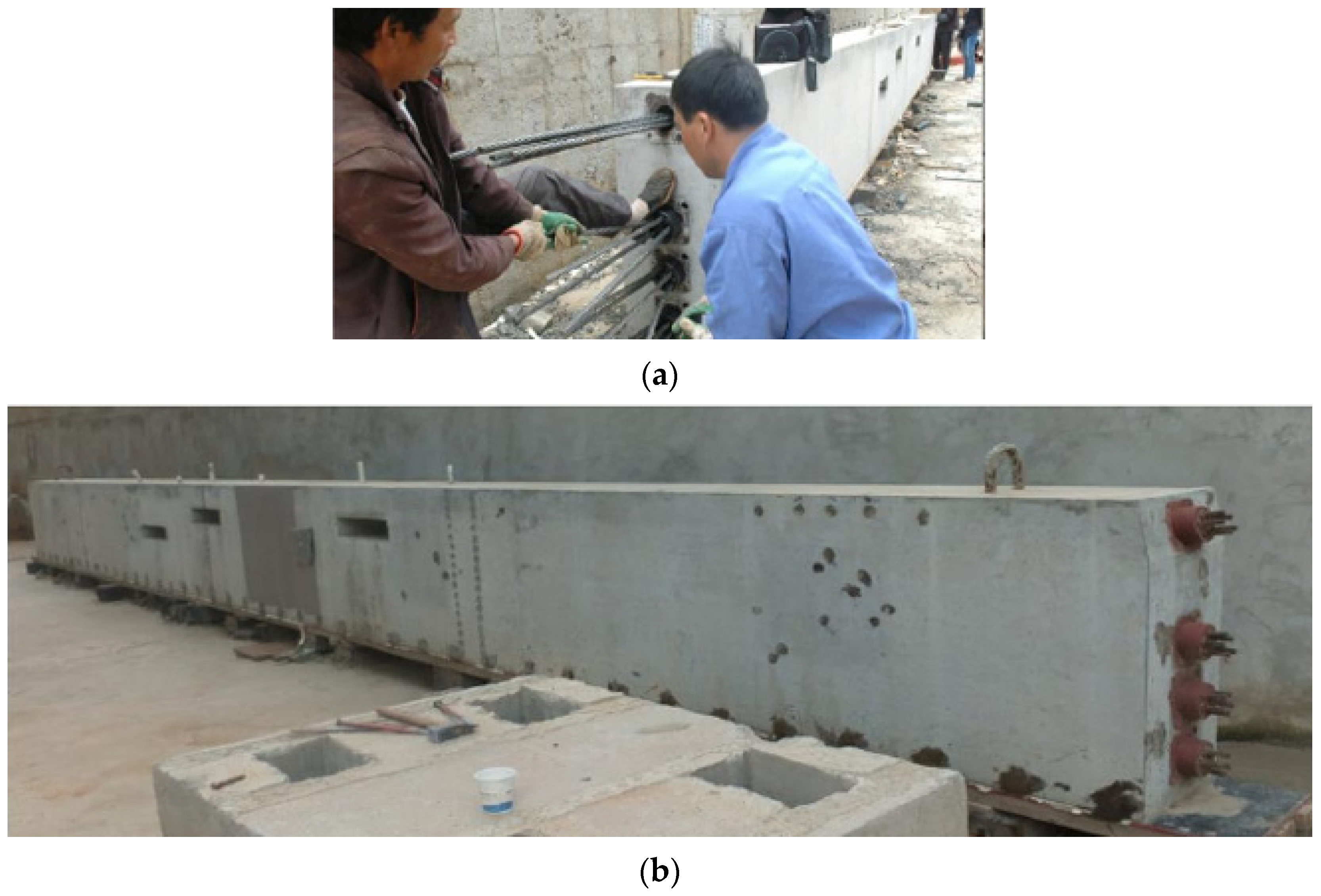
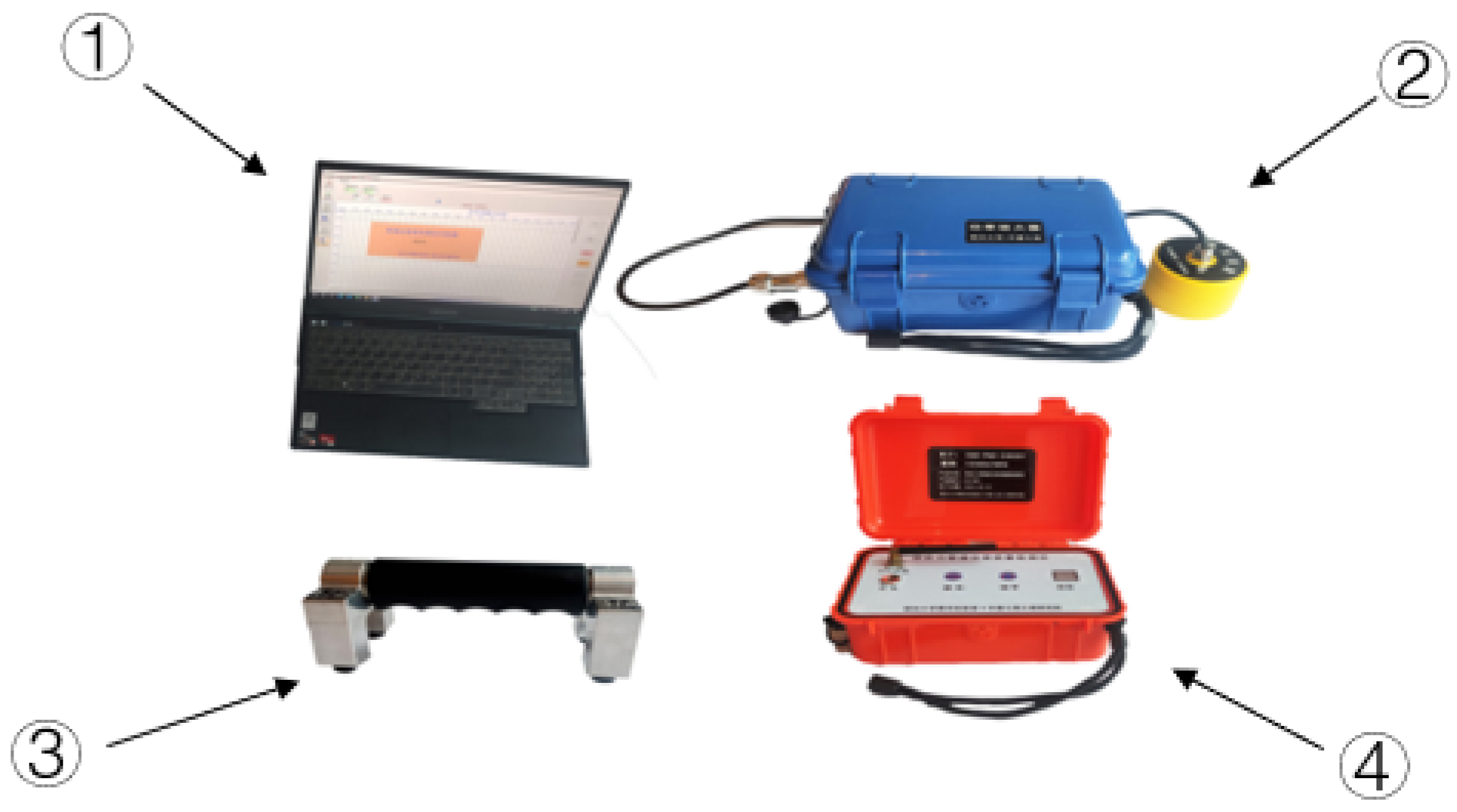





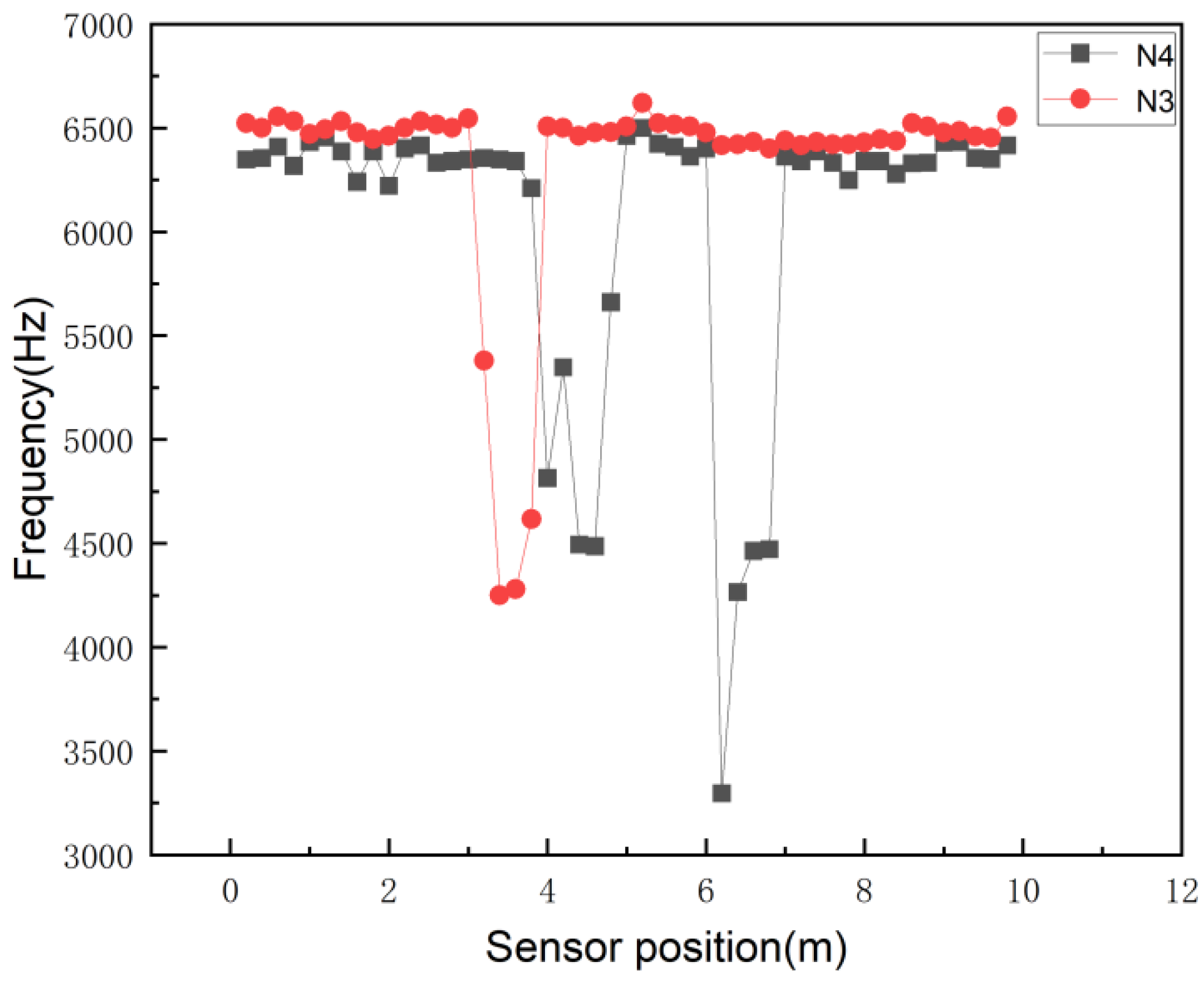
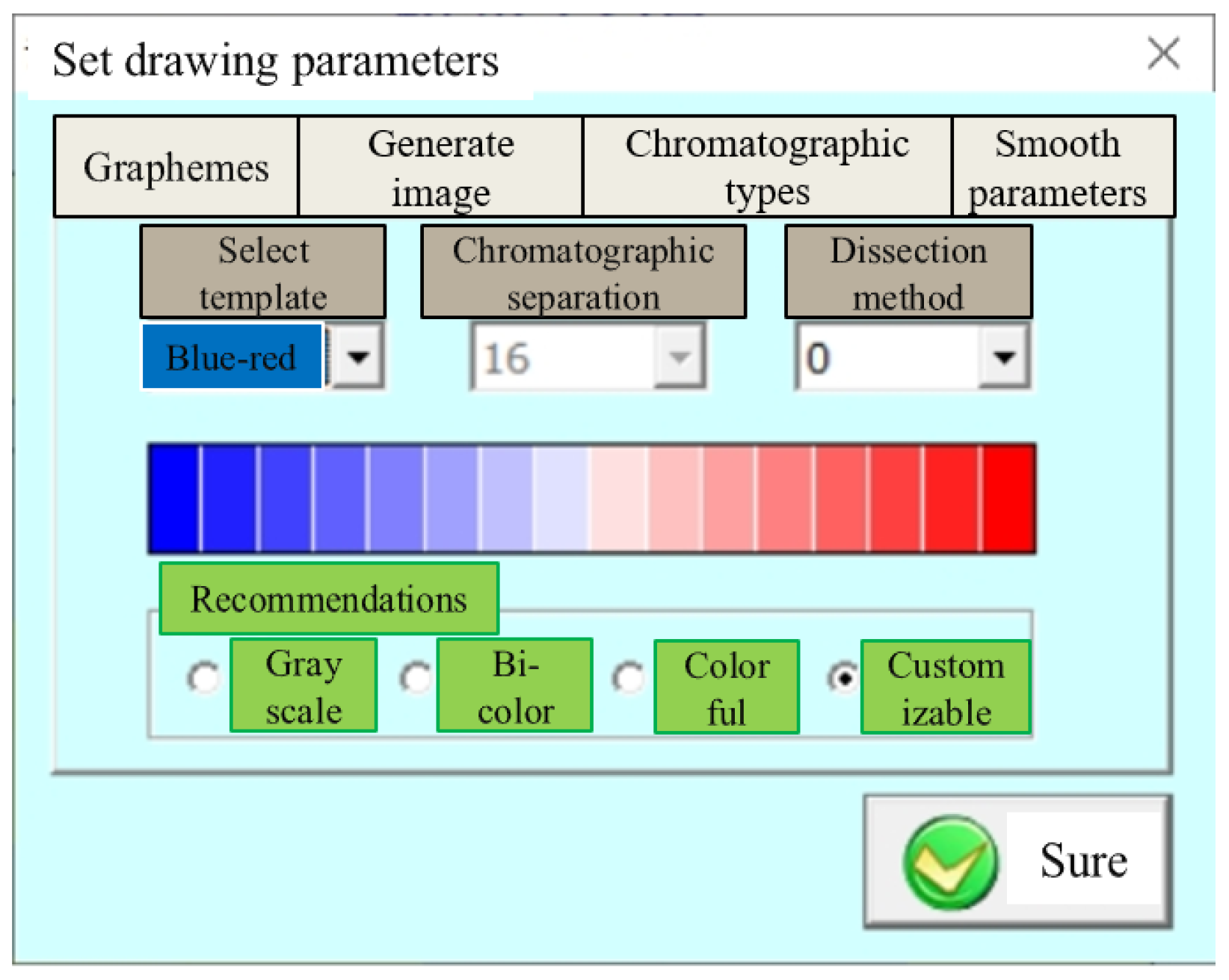
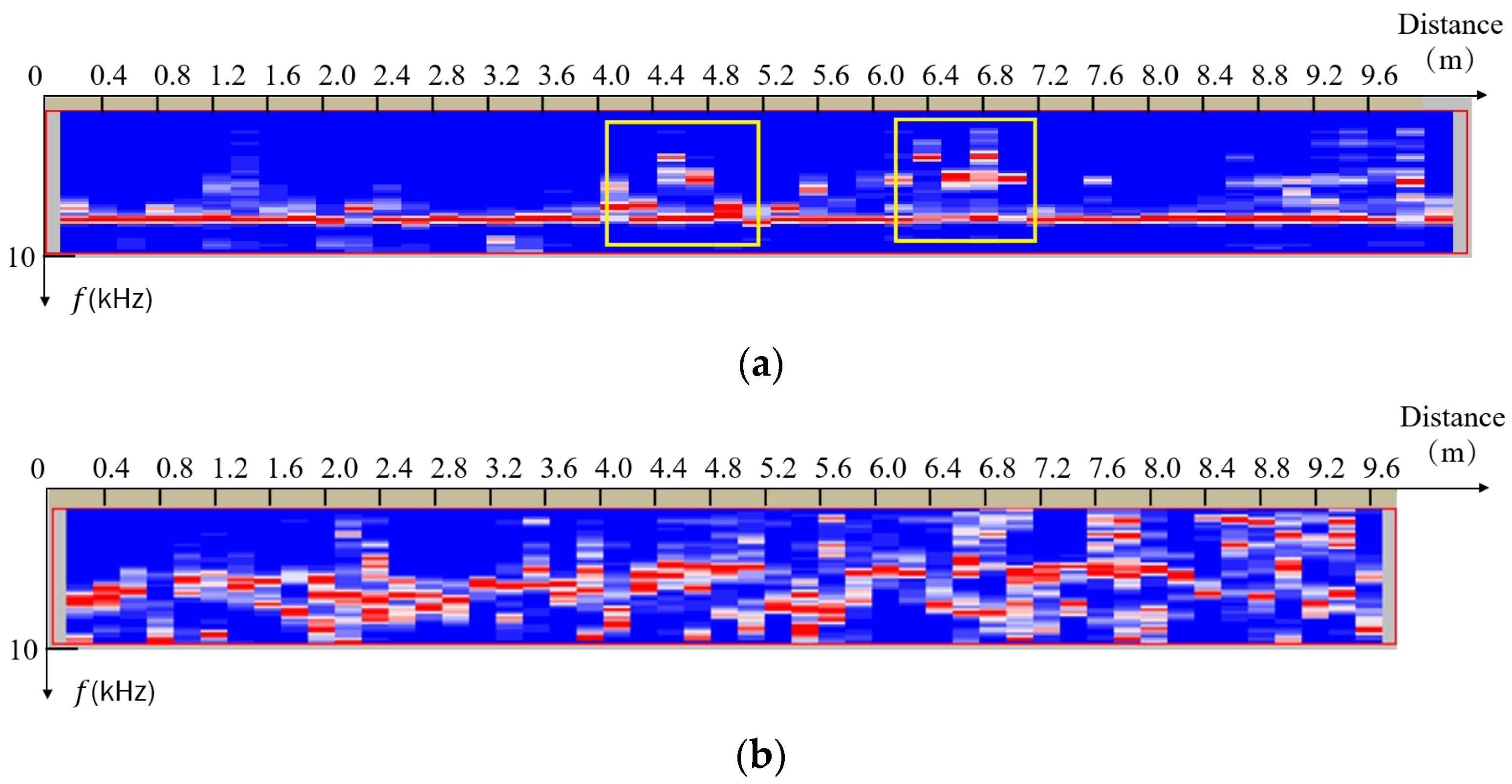

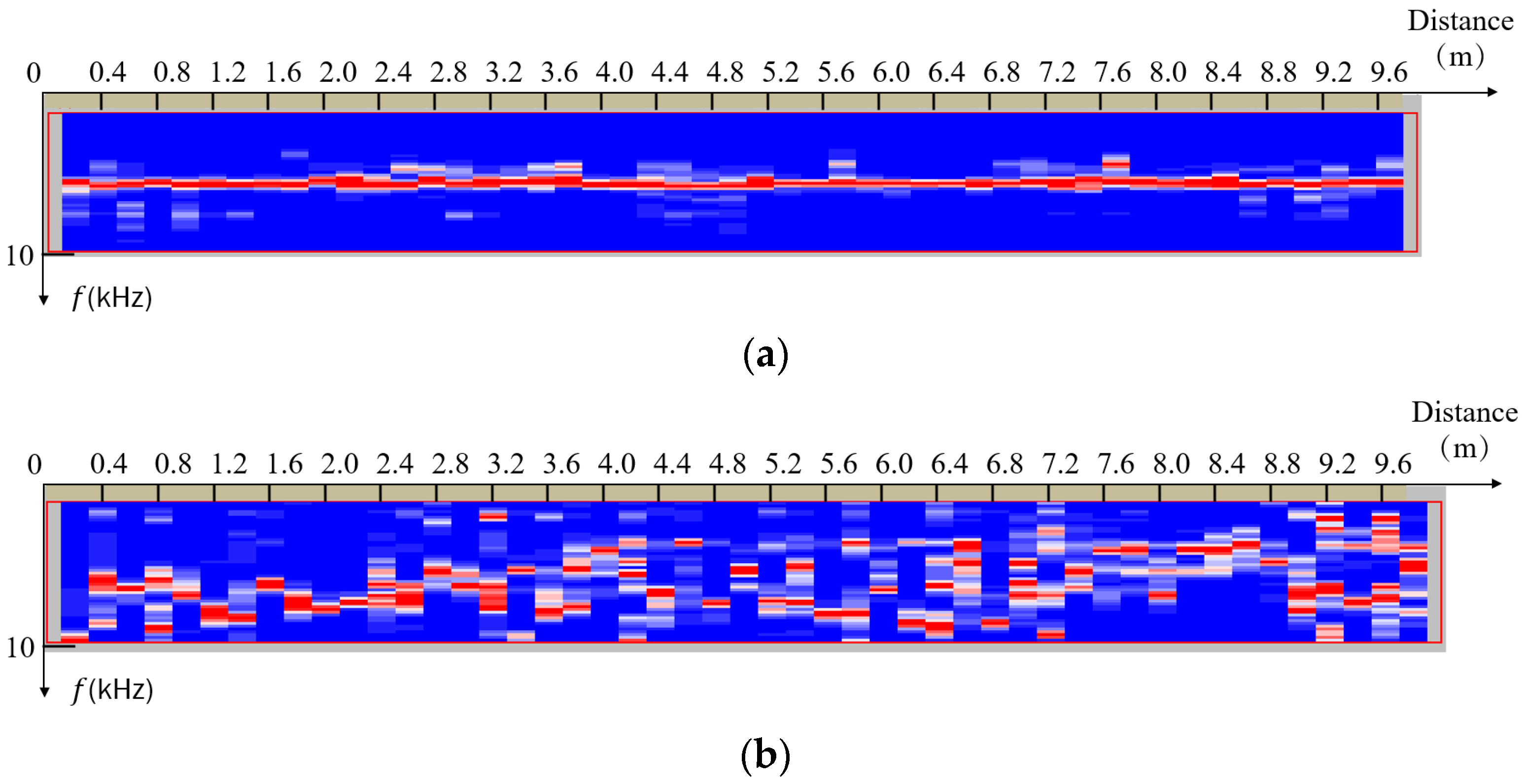
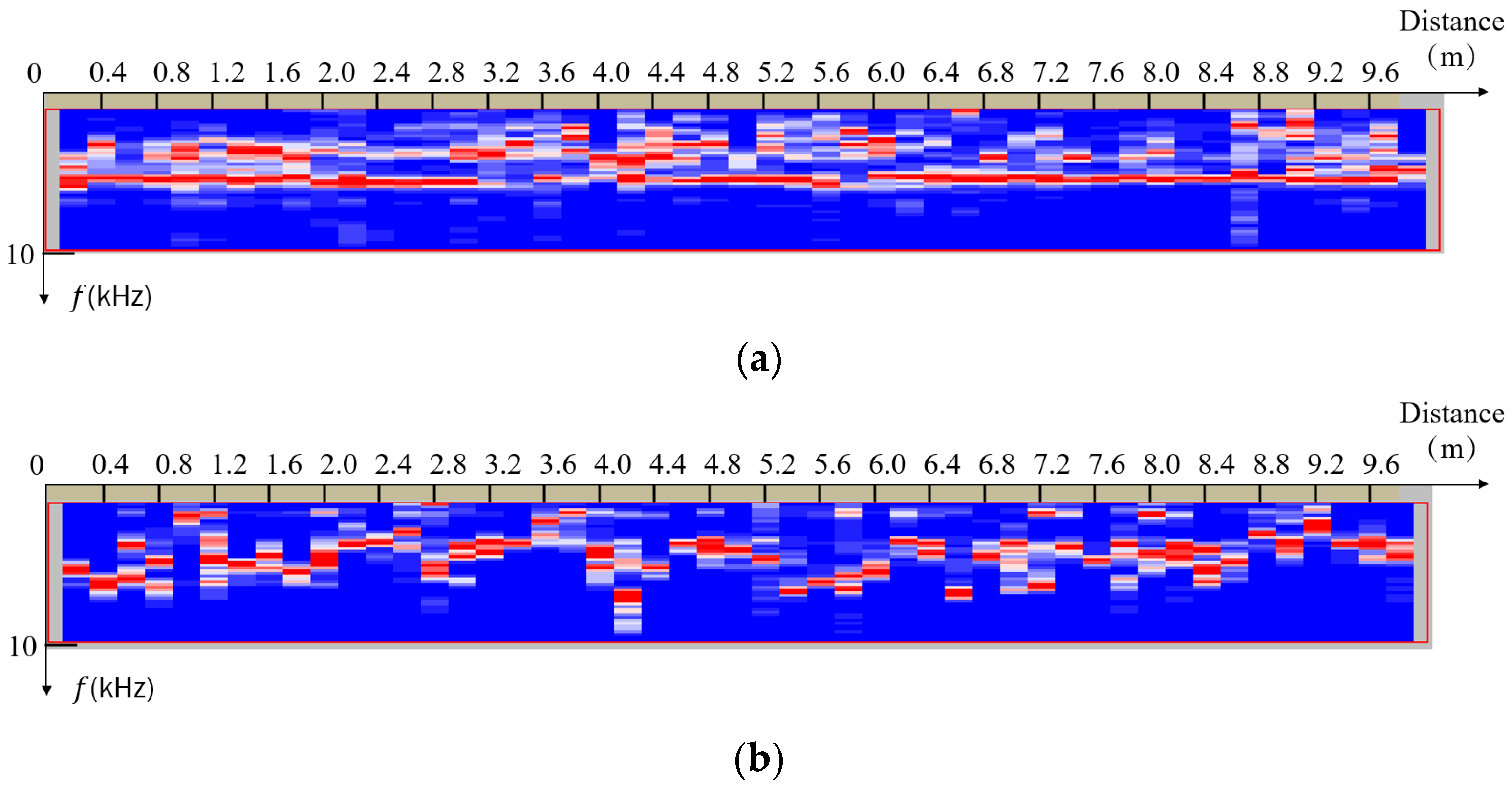
| Pipeline | Length | With or Without Defects | Defect Location |
|---|---|---|---|
| N1 | 10 m | With | Completely empty, no grouting |
| N2 | 10 m | Without | No defects |
| N3 | 10 m | With | 3.25 m~3.75 m |
| N4 | 10 m | With | 4.25 m~4.75 m 6.25 m~6.75 m |
Disclaimer/Publisher’s Note: The statements, opinions and data contained in all publications are solely those of the individual author(s) and contributor(s) and not of MDPI and/or the editor(s). MDPI and/or the editor(s) disclaim responsibility for any injury to people or property resulting from any ideas, methods, instructions or products referred to in the content. |
© 2024 by the authors. Licensee MDPI, Basel, Switzerland. This article is an open access article distributed under the terms and conditions of the Creative Commons Attribution (CC BY) license (https://creativecommons.org/licenses/by/4.0/).
Share and Cite
Ye, Y.; Wu, W.; Wang, Q.; Song, M.; Cai, Y.; Guo, P. Experimental Study on Grouting Quality Detection in Prestressed Pipeline Based on Scattered Wave Method. Buildings 2024, 14, 1402. https://doi.org/10.3390/buildings14051402
Ye Y, Wu W, Wang Q, Song M, Cai Y, Guo P. Experimental Study on Grouting Quality Detection in Prestressed Pipeline Based on Scattered Wave Method. Buildings. 2024; 14(5):1402. https://doi.org/10.3390/buildings14051402
Chicago/Turabian StyleYe, Yushan, Wenqi Wu, Qingshan Wang, Minghao Song, Yingchun Cai, and Pan Guo. 2024. "Experimental Study on Grouting Quality Detection in Prestressed Pipeline Based on Scattered Wave Method" Buildings 14, no. 5: 1402. https://doi.org/10.3390/buildings14051402






